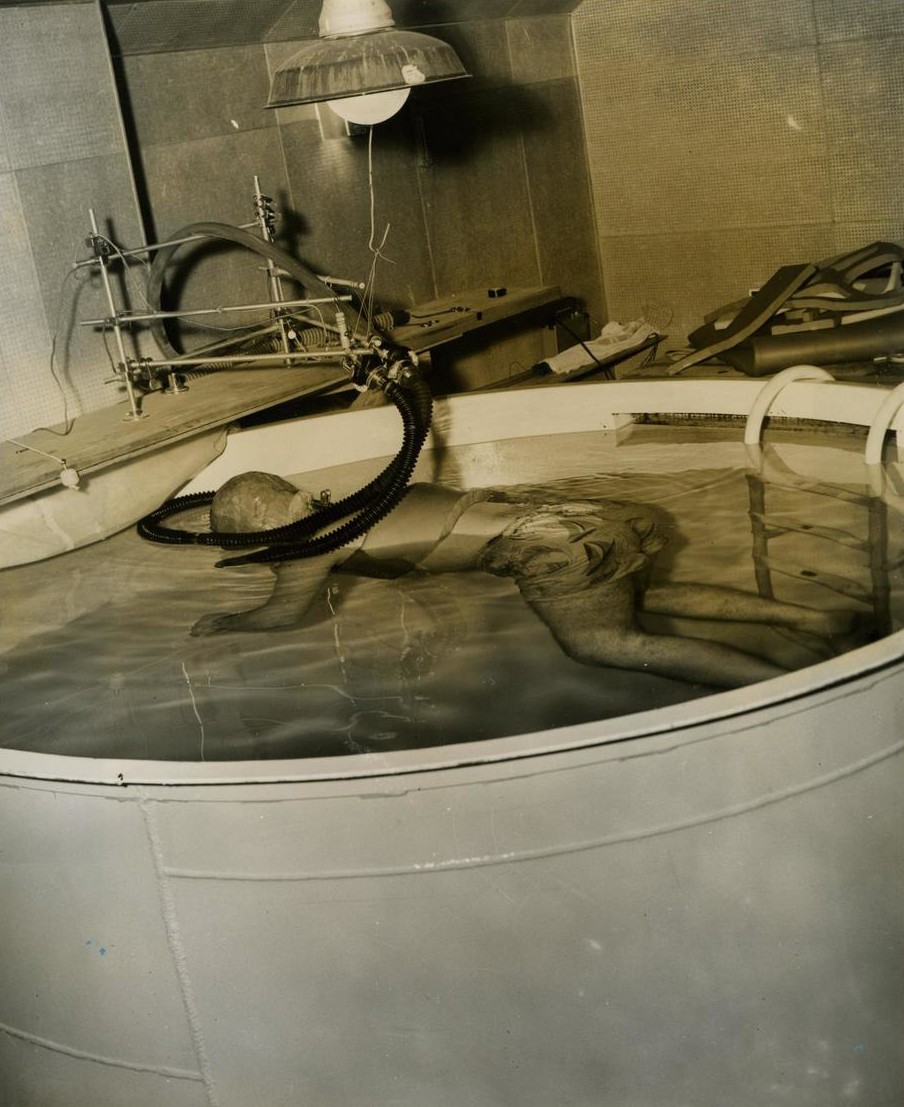
Like a lot of pioneers, John C. Lilly was controversial. whether working with hallucinogenics, dolphins or isolation tanks. On the latter topic, John Bryson of People magazine interviewed Lilly in 1976 about his experimentations with sensory deprivation. The opening:
Question:
What, precisely, is your so-called “isolation tank method”?
John C. Lilly:
The idea is to separate yourself from society through the solitude and confinement of a scientifically controlled tank. There should be only 10 inches of water, heated to 93° F—just right for maintaining the proper brain temperature—with enough Epsom salts so that your hands, feet and head all float. Lying on your back, you can breathe quite comfortably and safely, freed from sight, sound, people and the universe outside. That way you can enter the universe within you.
Question:
What is the origin of the technique?
John C. Lilly:
In 1954 there was an argument going on among neurophysiologists over whether or not the brain would sleep if all outside stimulation was removed. I was an eager young scientist pushing forward into regions of the unknown: the nervous system and the mind. The first year I used the tank, I proved that the notion the brain shuts off when removed from stimulation is sheer nonsense.
Question:
How many of these tanks are there in this country?
John C. Lilly:
I’d say more than 200, some at universities and research institutes but mostly in private hands.
Question:
Do you recommend the tank for everyone as a method of self-discovery?
John C. Lilly:
For most people, I think it would provide unique insights. Of course, there are exceptions. People with certain types of mental disorders should not use the method unless under professional supervision.
Question:
Isn’t it true that some people have had severe mental problems as a result of this experience?
John C. Lilly:
That is bull. In spite of the bad reputation of coerced sensory deprivation experiments, the tank method has rarely led to panic, fear or intense pain. We’ve had a few cases of spontaneous, reversible claustrophobia develop temporarily in a few people. We have had only good results with the tank.
Question:
Wasn’t one of those people your wife?
John C. Lilly:
Yes, she went into the tank one day and suddenly she had to get out. She scrambled up and pushed the lid of the tank so hard that the hinge broke. While lying there in the shallow water she had begun to recall her birth—the feeling of suffocation, the bright lights, the gasp of the first breath. It was too much for her. But there have been only one or two such incidents out of 450 people who have tried out the tank here.
Question:
Could the tank be used destructively for brainwashing?
John C. Lilly:
You can alter someone’s beliefs in any number of ways—hanging them up by their thumbs, putting them in isolation, feeding them various drugs. Yes, I suppose it could be used in that way. But the idea of using the tank to scare the hell out of somebody and coerce them is mostly just romantic nonsense.•
Tags: John Bryson, John C. Lilly


